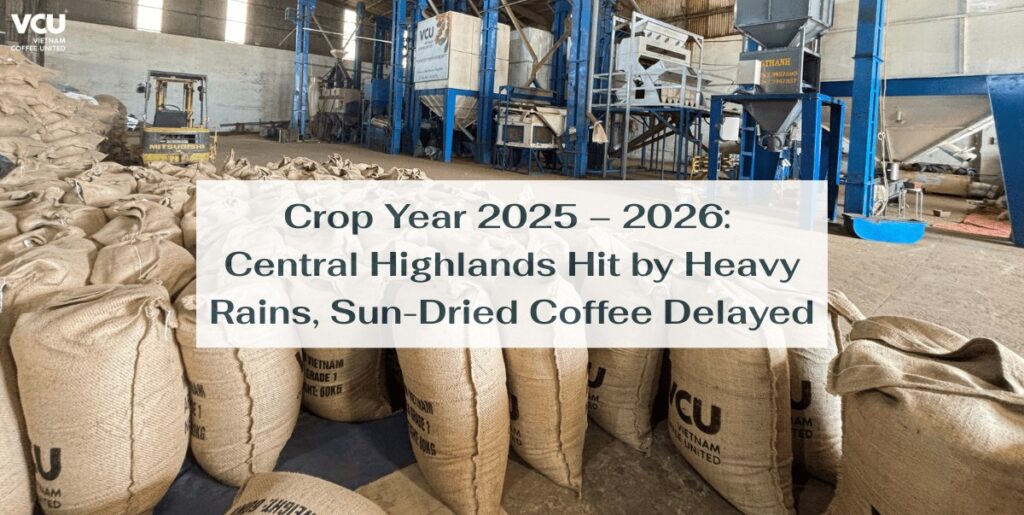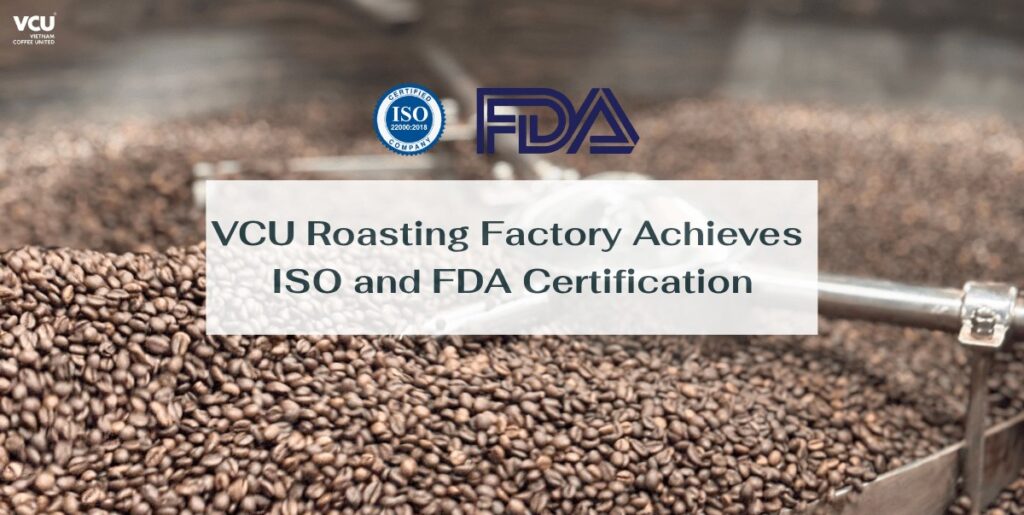Comparing Robusta and Arabica Coffee
Robusta and Arabica Coffee are the two most common coffee species in the world, accounting for over 90% of global production. Each has its own biological characteristics, flavor profiles, and processing standards. Choosing the right type of green coffee is a key factor in the success of roasters, distributors, and coffee chains.
This article will analyze the details of each element of Robusta and Arabica Coffee to give you a comprehensive perspective before making purchasing decisions.
Origin and Growing Conditions
Robusta (Coffea canephora) is widely cultivated in Vietnam, Brazil, India, and other tropical regions. Its ideal growing altitude is below 800 meters above sea level. Robusta is known for its high disease resistance, strong yield, and adaptability to hot and humid climates.
Arabica (Coffea arabica) is commonly grown in Ethiopia, Colombia, Brazil, and Vietnam. It thrives at elevations between 1,000 – 2,000 meters. Arabica is more sensitive to pests and diseases, has lower yield, and requires a milder climate to grow well.
Compared to Arabica, Robusta is easier to harvest, more cost-effective, and better suited for large-scale supply.
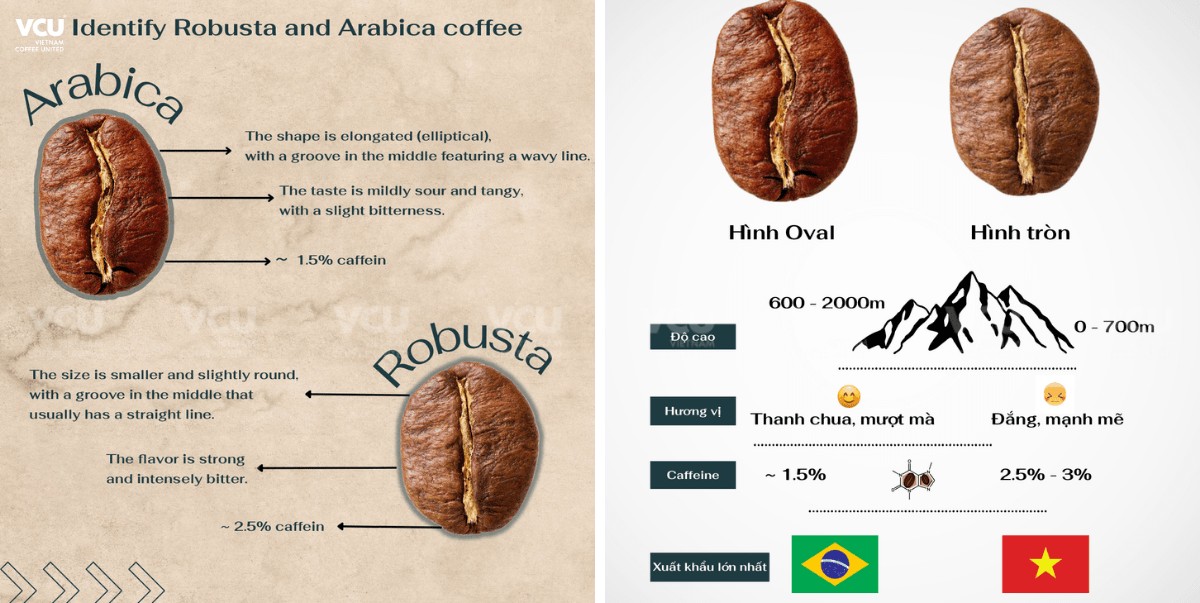
Physical Characteristics of Green Coffee Beans
-
Robusta beans range in size from small to medium (S13 – S18), have a round and uniform shape with straight center cuts. Ideal moisture content: 11.5% – 12.5%.
-
Arabica beans are medium to large in size (S14 – S19), more oval in shape with slightly curved center cuts. Ideal moisture content: 11% – 12.5%.
Proper moisture helps preserve green coffee quality, prevents mold, and ensures a more stable roasting process with minimal loss.
Flavor Profile
Understanding the flavor of Robusta and Arabica coffee helps businesses select the right bean type for their target market and brewing style.
-
Robusta has a bold, strong flavor with a distinct bitter aftertaste and very low acidity. It contains a high caffeine content (2.2% – 2.7%) and creates a thick crema for espresso. It’s often used in traditional brewing methods like the Vietnamese phin filter.
-
Arabica has a lighter body, sweet and fruity notes, and bright acidity. Caffeine content is lower (1.1% – 1.7%). With floral, fruity aromas and complex acidity, Arabica is commonly used in modern espresso, pour-over, and cold brew methods.
(Caffeine content sourced from Journal of Food Composition and Analysis, SCA, and FAO.)

Pricing and Market Volatility
-
Robusta is ideal for customers seeking large quantities at a cost-effective price — typically 20–50% cheaper than Arabica due to lower post-harvest processing costs (mostly Unwashed, Natural, or Honey processed).
Read more: Robusta Honey
-
Arabica tends to be more expensive and subject to seasonal price fluctuations, heavily influenced by weather and supply. The higher price is also due to more complex processing methods (Washed or Fully Washed).
Read more: Arabica Full Washed Son La
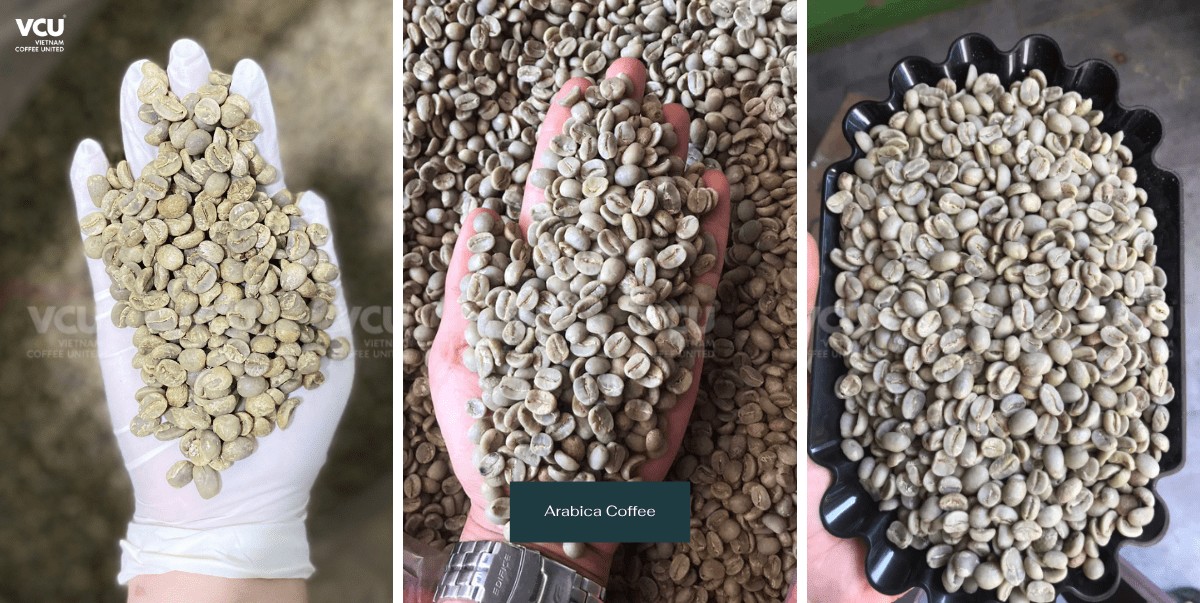
Key Criteria When Purchasing Green Coffee Beans
For roasters and distributors, important factors include:
-
Defect Rate: Should be below 5% for Robusta and below 2% for Arabica (according to SCA, based on 300g sample).
-
Bean Size: For exports and machine roasting, S16 and above are preferred; S13 is commonly used for ground coffee.
-
Moisture: 11.5% – 12.5% is optimal for stable storage, mold prevention, and efficient roasting.
-
Certifications & Traceability: Look for ISO, FDA, and other lab-tested quality certifications.
-
Consistency: Ensure uniform quality across multiple orders.
VCU – Trusted Green Coffee Supplier
At VCU, we fully understand the needs and selection criteria of roasters and distributors. That’s why we offer a wide range of Robusta and Arabica coffee beans with >90% screen retention, sourced from top growing regions in Vietnam. Our processing system meets international standards, ensuring stable quality and a reliable supply.
In addition, VCU holds ISO and FDA certifications (for U.S. export), along with full documentation and lab test reports for both Robusta and Arabica coffee green beans. We offer samples, fast quotations, and full VAT invoicing.
Both Robusta and Arabica Coffee have their strengths. Choosing the right bean type, supplier, and quality standard helps you reduce costs, ensure quality, and boost your competitive advantage in the market.
If you’re looking for expert advice on selecting green coffee that fits your business, contact VCU today!
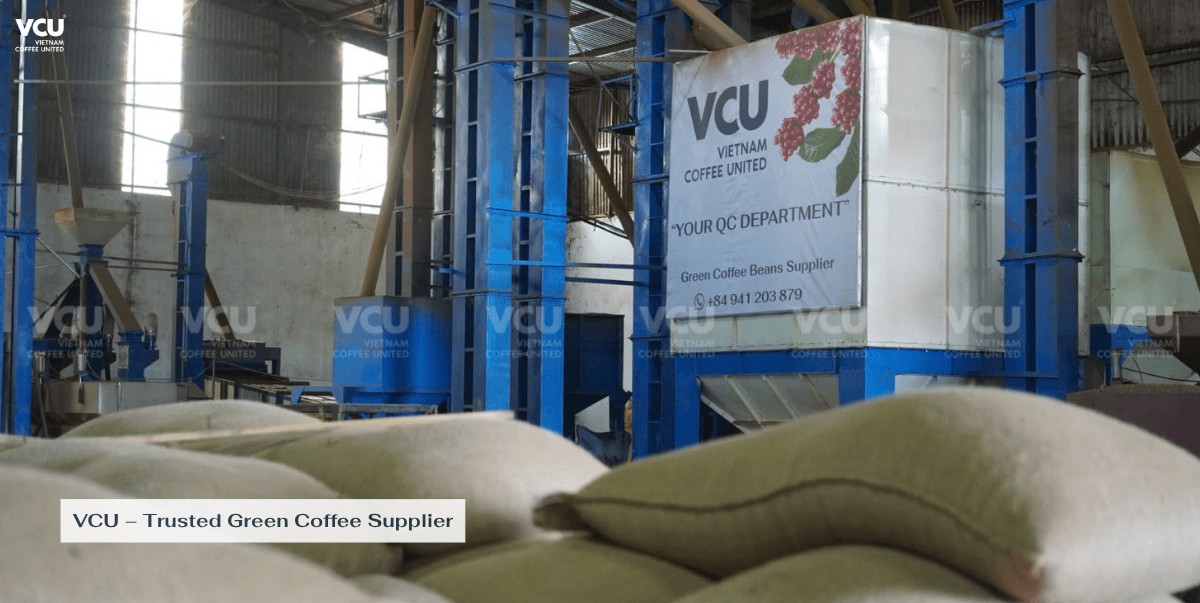
Contact Information
VCU Joint Stock Company (VCU JSC)
Address:
– Roasting Facility: Residential Group 6, Chu Prong Town, Chu Prong District, Gia Lai Province
– Green Bean Facility: Ia Der Commune, Ia Grai District, Gia Lai Province
– Fanpage: VCU – Vietnam Coffee United
– Email: info@vietnamcoffeeunited.com
